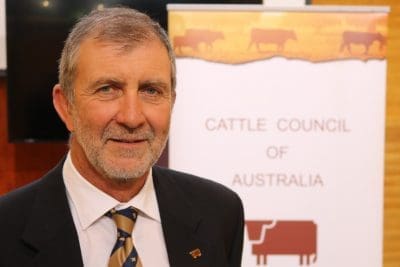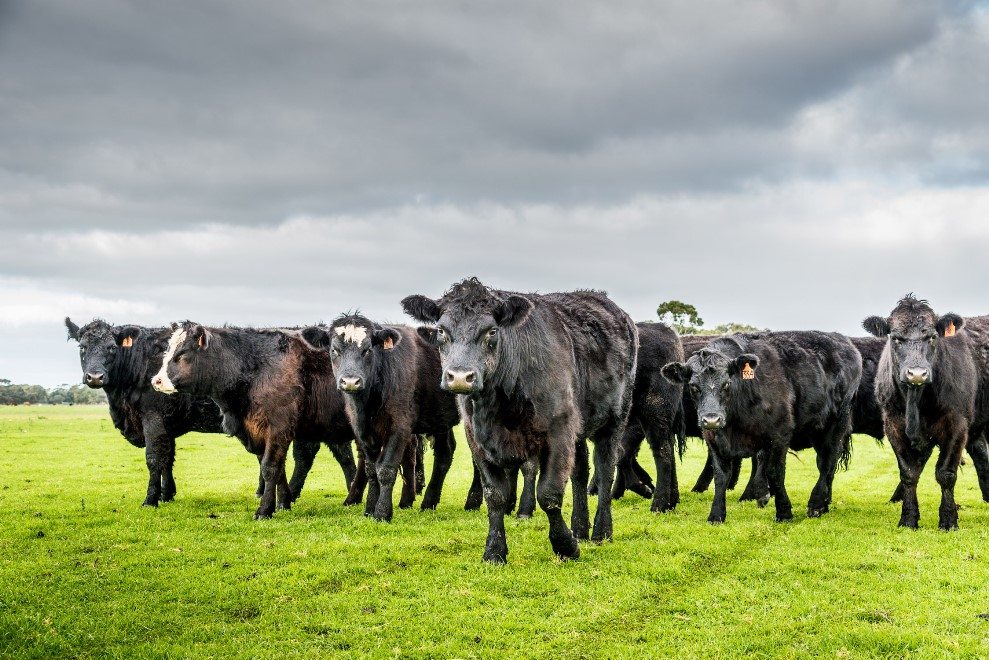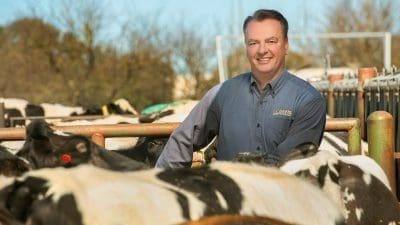THE European Commission is being urged by independent climate scientists to embrace science that shows carbon neutrality goals can be achieved without destroying animal agriculture in the process.
The European Commission is about to settle on a new policy on methane which will determine the approach Europe takes in future to reducing methane emissions from agriculture, as well as from energy (coal, oil and gas) and waste.
The policy it settles on could have profound implications for animal agriculture, scientists have warned.
The big issue for agriculture is whether the EU policy will continue to use the 100-year Global Warming Potential (GWP100) model to account for the warming effect of livestock emissions in future, or whether it will use the GWP star model that has more recently emerged in global climate policy debate.
Several independent scientists have expressed concern that the currently accepted GWP 100 approach overstates, and quite dramatically so, the effect that methane emissions from stable herds of livestock have on global temperatures.
In 2018 a team of scientists at Oxford University published a paper highlighting the flaws in the GWP 100 model and proposing a new metric be adopted that they believe more fairly accounts for the different warming impacts of different types of emissions, referred to as the GWP* (GWP star) model.
The GWP 100 is the widely accepted convention and is the model used in the Paris Climate Agreement. Its continued use is supported by a wide range of climate scientists.
If the EC elects to use the GWP 100 model to underpin its future methane policy, pressure will increase to eliminate practices such as ruminant agriculture, scientists have warned.
Flaws in a ‘one size fits all approach’
A problem with current climate change policy, according to climate scientists such as Professor Dave Frame, head of the Climate Change Research Institute at Victoria University of Wellington, New Zealand, is that the GWP 100 model uses a ‘one size fits all’ approach to determine the warming effect of different climate gases.
That approach treats emissions from all gases as equivalent, when in reality different gases have different warming effects, as this article from the Oxford Martin school of the University of Oxford explains.
It notes there are two distinct types of emissions:
– long-lived pollutants, like carbon dioxide, which persist in the atmosphere and build up over centuries. (For example, the carbon dioxide created by burning coal in the 18th century is still affecting the climate today, as Dr Michelle Cain from the Oxford Martin Program on Climate Pollutants noted in 2018); and
– Short-lived pollutants, like methane, which disappear within about 10 years. Their effect on the climate is important, but very different from that of CO2.
Scientists including Oxford professor Myles Allen, whose team was instrumental in the development of the GWP star model, are now urging Europe to adopt global climate policy which more fairly accounts for the differences between different types of emissions.
In his feedback to the EC methane policy process which closed last week, Professor Allen states that the GWP 100 method understates the warming impact of new methane sources by a factor of four over the first 20 years after the increase, and overstates the warming impact of constant methane by a factor of four.
Having decided to aim for climate neutrality, Europe has a simple choice, Dr Allen writes: to define climate neutrality in terms of metric-equivalent emissions or in terms of warming-equivalent emissions.
“This should be an open and public discussion, because the implications, particularly for agriculture, are profound,” he wrote.
‘Achieving climate neutrality in terms of metric-equivalent emissions could mean eliminating practices, such as ruminant agriculture, that are not actually causing global warming.’
“Achieving climate neutrality in terms of metric-equivalent emissions could mean eliminating practices, such as ruminant agriculture, that are not actually causing global warming.
“Warming-equivalent emissions resolve this problem.”
In another submission, Dr Frank Mitloehner from the University of California Davis, whose field of study is animal agriculture and its relationship to climate change, has also urged European policy makers to carefully reflect on the use of the GWP100 convention for methane.
He explained that methane is a ‘flow’ gas which cycles through the atmosphere, however, the GWP 100 approach incorrectly treats it as a ‘stock’ gas, which accumulates in the atmosphere.
Furthermore, GWP 100 results in quantification of greenhouse gases as CO2 equivalent units (CO2e), but not actual warming equivalent units.
Dr Mitloehner said the GWP 100 was created by scientists in the 1990s who were trying to standardise the impact of each greenhouse gas in order to allow people to draw comparisons and understand “this behemoth called global warming”.
GWP 100 has since become a well-known and ‘easily digestible convention’ that is now used to drive policy and regulations aimed at limiting warming.
However, it simply measures methane’s carbon dioxide equivalence (CO2e) and overlooks how it behaves in – and thus warms – the atmosphere, Dr Mitloehner wrote in his submission.
“Therein lies the flaw. When it comes to measuring global warming potential, I am in agreement with researchers from Oxford University, who are proponents of a revised system referred to as GWP* (i.e. GWP Star).
“Instead of measuring one pulse emission of methane against a same-size pulse emission of carbon dioxide, Drs. Myles Allen, Michelle Cain, John Lynch, Dave Frame and other teams of researchers account for the difference between a stock gas (carbon dioxide) and a flow gas (methane), and therefore, is a more accurate system of measuring the actual warming potential of short lived climate pollutants over time.
“I believe that this distinction is critical for you as you address the European Union’s methane emissions.”
Dr Mitloehner’s full submission can be read here. A new video below further explains the latest findings from University of California, Davis research into biogenic methane and how it affects the atmosphere:
GWP 100 ‘not fit for purpose’
In a presentation to a webinar hosted by the Global Roundtable for Sustainable Beef earlier this year, Dr Allen said it was clear the current method of calculating the global warming impact of different climate gases “is not fit for purpose”, because it treated the impact of each over time as equivalent, “when they’re clearly not”.

A critical question for the agricultural sector is whether most scientists are accepting of this science and whether influential policy groups such as the Intergovernmental Panel on Climate Change (IPCC) are prepared to rethink the current policy on methane.
When asked about this during the GRSB webinar Dr Allen, who contributed to the IPCC’s 1.5 degree report in 2019, said many scientists working within the physical science group in the IPCC accepted the science that warming equivalent emissions (ie GWP star) gives a better indication of the impact of greenhouse gases on global temperature than so-called CO2 equivalent emissions (GWP 100).
However, within the IPCC’s policy and economics groups that position was still considered controversial, and remained “a very live topic of debate”.
Livestock sector is a net methane emitter: CSIRO
Highlighting the challenges facing the agriculture sector, 61 research organisations from around the world recently released a report card on the global methane budget, which singled out livestock agriculture as a major problem for methane emissions.
As explained in this CSIRO article, the Global Methane Budget lists livestock agriculture as being responsible for more than 57 percent of all anthropogenic emissions of methane.
The reported noted that methane, once emitted, stays in the atmosphere for about nine years – a far shorter period than carbon dioxide.
However its global warming potential is 86 times higher than carbon dioxide when averaged over 20 years and 28 times higher over 100 years.
Soils (both agriculture and non agricultural) were responsible for just 0.5 percent of the total methane sink.
The CSIRO’s Pep Canadell told Beef Central there is no doubt that the livestock sector globally, and in Australia, is a net methane emitter to the atmosphere, and therefore a net contributor to human induced climate change.
However he also acknowledged methane emissions from cattle are part of a biogenic carbon cycle, and, where livestock herds are constant or decreasing, they are not adding new additional carbon to the atmosphere.
“Having constant livestock herds would no longer increase further global warming beyond the warming that is already creating now, it would just keep it constant. If the number of cattle goes down, then that overall warming contribution goes down too.”
Dr Canadell said he has worked with Dr Allen and has discussed the various indices to measure the relative importance of the various greenhouse gases (GHGs).
He said there were many different ways that the warming potential can be measured.
However, the IPCC with the United Nations Framework Convention on Climate Change had studied the issue, assessed all the pros and cons, and had settled with GWP100 for the national reporting to the Convention, he said.
“Thus, for consistency with the Convention we use GWP 100.”
“I personally feel that there is no one best way to estimate the relative potential of warming of the various gases, so it makes sense that we settled with one and we are sticking with it, until a changed is discussed.
“The compromise with GWP 100 was between the long term objectives of stabilising the climate (which reduces the relevance of methane) and giving opportunities to countries to use methane reductions as one of the many options to contribute to mitigation climate change.”
Cattle Council of Australia calls for science to be urgently validated
As global policy machinations continue to move in directions that could pose greater challenges for the livestock sector the Cattle Council of Australia is actively calling for a full scientific assessment of the GWP 100 and GWP star models.
 In June the CCA held talks with prominent Australian scientists, Richard Eckard and Mark Howden, on the prospect of an alternative method for measuring livestock methane emissions being adopted.
In June the CCA held talks with prominent Australian scientists, Richard Eckard and Mark Howden, on the prospect of an alternative method for measuring livestock methane emissions being adopted.
Those talks further highlighted existing uncertainty around where the science may settle.
Professor Eckard outlined how the existing model may overstate the impact of agricultural emissions, while professor Howden outlined several challenges that confronted efforts to adopt a new model.
Cattle Council of Australia president Tony Hegarty said the key question is “whether the measurement is right”.
“We believe if the system is broken it should be fixed – it doesn’t matter if it’s easy or hard.”
TOMORROW: How an Aussie sheep and cattle producer helped drive cutting edge global methane science




